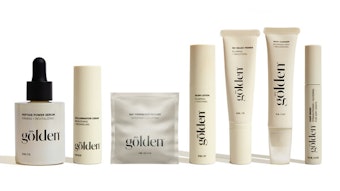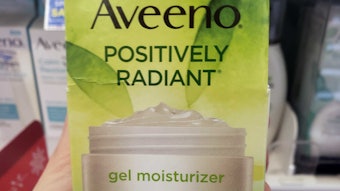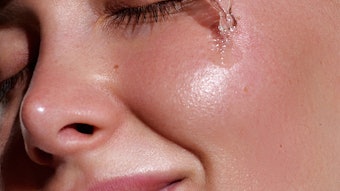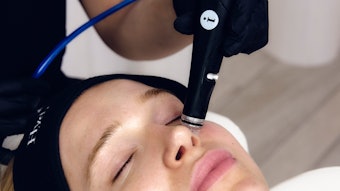
As a cosmetic developer, my interest in addressing feminine hygiene is twofold. First, while working with a previous company, I dedicated time and resources toward the research and development of formulas for this segment. Products used for feminine care are applied topically, similarly to cosmetics, but have specific requirements—for which I have built expertise.
Secondly, and more personally, I spent my childhood in a village where I witnessed most households lacking basic toileting facilities. In fact, as recently as 2011, India's census found that 89% of the nation's rural population lived in households without toilets. This is still true to some extent today.
As such, Indian women and girls must find ways to cope with monthly menstrual hygiene and other intimate area conditions. Many have no access to toilets or are faced with unclean lavatory facilities. In fact, of the 355 million reproductive-age women in India, only 12% used absorbent pads or other sanitary napkins, according to a report by AC Nielsen and Plan India in 2010. Compare this with a rate of 96%, as observed in developed countries like the United States.
In addition, some of the challenges identified are issues of sanitary waste disposal, in addition to feminine hygiene still being a taboo in the nation. Yet the industry has all the triggers in place to experience explosive growth. It has already been growing at the rate of ~21% and is projected to grow at 25% in the near future. The Asia-Pacific region was estimated to be the largest market for feminine hygiene products in 2015 and will continue to be the leading contributor in future.
Current State of Feminine Hygiene
Clearly, the Indian feminine hygiene market is less penetrated. Furthermore, it is dimly competitive. A few international companies are present in the market and are making efforts to develop the category. Marketers are promoting products by celebrity endorsements, promotional activities at events and awareness campaigns to make females more aware of new products and their advantages. P&G, Johnson & Johnson, Unicharm India, Kimberly-Clark, etc., are some of the major companies operating in the feminine hygiene market. Whisper is another prominent and trusted brand among Indian females.
Unfortunately, the affordability of these disposable sanitary napkins is still a major concern for rural Indian women. Instead, many use cotton cloth or even rely on old fabric, husks, dried leaves and grass, ash, sand or newspapers to manage menstruation—clearly posing significant health risks. Lack of awareness also limits women’s comprehension of how sanitary napkins should be used and why they promote good health and hygiene. Furthermore, as noted, basic toiletry, intimate care and menstrual hygiene requirements for women have long been a taboo topic in India—in spite of the need for proper products and practices to address this most specialized type of care.
The good news is continuous improvement of literacy rates, enhancements in consumer safety and sanitary consciousness, and extended lifespan, plus improvements in conditions in rural areas, have all created opportunities for expansion of the hygiene market. The Indian people want to improve their living standards and incomes. The number of working women has increased, upgrading consumers’ consumption habits. These factors will help to fuel the development of hygiene markets. According to Euromonitor, the Indian feminine hygiene product market has reached 22.21 billion Rupee ($340 million) and is expected to reach 34.68 billion Rupee ($522 million) in 2020.
Formulating Feminine Hygiene
Feminine hygiene, as used here, generally describes personal care products that cosmetically address menstruation and other typical biological conditions of the vaginal area. Such concerns affect nearly every woman on the planet. In fact, consider that the average woman will experience approximately 350 menses in her lifetime, which given an estimated average length of six days, means she will spend a total of almost six years of her life menstruating.
Clearly, the need for products to address this segment is significant and affords the opportunity for manufacturers to introduce everything from sanitary napkins or towels; and tampons, menstrual cups or pantiliners; to feminine wipes, washes, sprays, moisturizers, deodorants, creams and powders. But these products carry some special formulating considerations.
The female genitalia is home to a delicate balance of bacteria and yeast. If this balance is disturbed, one can experience painful conditions such as urinary tract infections (UTIs), vaginitis, pelvic inflammatory disease (PID) and yeast infections. Some of these infections, particularly UTIs, can even become acutely severe. The best way to safeguard against these common but potentially serious infections is to prevent them altogether by keeping bacteria and yeast levels in balance.
From a topical treatment perspective, this means gentle cleansing in the vaginal area, as well as best practices to prevent contamination; e.g., avoiding bubble baths, using proper washing techniques and wearing clean undergarments. Furthermore, maintaining feminine hygiene can prevent odors, itching and general discomfort. The good news is the vagina is self-cleansing, so little more than clean water is required to gently remove dirt and debris. However, for more pronounced cleansing and to address cosmetic concerns in this sensitive area, following are some specific formulation considerations.
Intimate Cleansers and Washes
Cleansers should be naturally pH-balanced, i.e., between 4.5-5.5, for gentle daily use so as not to overly cleanse the area, which can cause an imbalance in the normal growth of bacteria. It is known that a healthy vaginal pH is ≤ 4.5 during reproductive years and > 4.5 before menarche and after menopause. When vaginal pH is too high, it loses its protective mechanism and can result in an overgrowth of bacteria. That can lead to bacterial vaginosis, odor, itching and discomfort.
Intimate washes may include vitamins and natural herbal extracts, or milk extracts and proteins to protect and cleanse the vaginal area while maintaining the necessary pH balance. Such ingredients additionally improve skin tone and texture, which is often irritated by sanitary pad rashes and undergarment friction.
Cleanser structure: Cleansers for the external vaginal area must be structurally different from other body cleansers. Their formulation strategy differs in the amounts of surfactants and (low) foam, ease of rinse-off, refreshing effects, antibacterial activity, pH, etc. They are considered a cosmetic, as they are applied onto the external genital area, yet they must be formulated to avoid inflammation of the skin nearby the vagina channel.
Surfactants: The cleansing action of a feminine hygiene product is generally based on surfactants, which remove the dead skin cells from body surfaces, erase unpleasant odors and eliminate the residues of skin metabolism and any soil left from toilet use. A reduction in excess resident flora is also necessary. The formulation strategy is to select the most delicate among the available cleansing systems. The action required is a quick wetting of the skin and the residual conditioning of the intimate body parts without excessive simultaneous degreasing of the skin.
Moreover, accurate rinse-off is necessary; residues of surfactants should not be left on the skin before the next cleansing/rinse. Rinse-off actions are frequently incomplete, for the anatomic complication of the area and the limited time dedicated to washing that area. Moreover, hair in the region impedes complete washing.
Lack of awareness in rural areas of India limits women’s comprehension of how sanitary napkins should be used and why they promote good health and hygiene.
Personal hygiene surfactants also should not produce high foam, but rather respect the skin equilibrium in the treated zone. The most used strategy to assembling the cleansing complex is by blending surfactants. A high foaming surfactant such as sodium, magnesium or ammonium lauryl ether sulfate at 1–6% w/w is modified to be less aggressive for skin by blending with one or more mild surfactants at 1–4% w/w. Absolute concentrations depend on the foreseen dilution ratio of the final product with water. Lauryl sulfates and lauryl ether sulfates are almost never or should never be used alone due to their substantivity for the skin, excess foaming power and poor resistance to long-term hydrolysis at acidic pH.
The most delicate surfactants for feminine cleansing are the anionic surfactants alkyl sulfosuccinates, sodium lauryl sulfoacetate and hydrolyzed proteins condensed with vegetal fatty acids, with some amphoterics like alkyl amidopropyl betaine and cocoamphoglycinates, which also are gentle. Among the nonionics, alkyl polyglucosides, ethoxylated glycerides or alcohols and their blends are frequently used to minimize skin degreasing.
The concentration of active surfactants is generally low for the described considerations; i.e., easy rinse-off and no residue left on the skin. In some cases, this concentration is just enough to reach the critical micelle concentration—similarly to delicate makeup removers. In relation, Quillaja tree saponins have been used for their mildness, controlled foam properties and skin compatibility.
Lather: In respect to the skin area and mildness, as noted, lather boosters are almost never used in these systems, as foam must be transient and decay rapidly, making rinse-off more efficient. Nevertheless, amine oxides are used in some formulations because they have skin conditioning properties at an acidic pH. An additional strategy to ensure mildness is to add super-fatting agents like fatty acid glycerides or hydrolized proteins in the cleansing formula to reduce the aggressiveness of surfactants toward skin keratin.
An interesting way to eliminate soil from the skin surface is to use a nonaggressive, non skin-dehydrating emulsifier. For example, sucrose esters, particularly sucrose laurate, do not irritate skin and do not interfere with the skin’s ability to produce and retain water. In addition, they perform some antimicrobial action toward certain bacteria, including those producing malodor, and against fungi of the Candida species without posing any harm to the resident bacterial flora. Recently, zinc coceth sulfate has been proposed for its antimicrobial and deodorant action, in combination with cocoyl glutamate-derived surfactants.
Acidity buffering: The second main characteristic of feminine cleansers is, as highlighted above, the pH value; according to many gynecologists, it should be as close as possible to 3.5–4.5, especially when the product is diluted with water. Following blending with water, the pH of a diluted personal cleansing formula decreases to about 7. In order to prevent this phenomenon, it is a common practice to create a system buffered at an acidic pH that could maintain its value even after dilution.
The ideal buffer system is partially neutralized lactic acid, as it is a well-known and safe physiological substance. Its concentration depends on the foreseen dilution ratio in the formula. It is generally buffered with an alkaline material, including the amino acid arginine. Citric acid is sometimes used, even if it is more prone to bacterial attack. Carefully buffered acids concentration can reach 5%.
Thickening: The fluidity of the intimate cleansing product must allow for proper dosage due to the area being intricately configured, and to allow for the use of a cleansing aid such as a sponge. The thickeners used are usually pH-insensitive, such as hydroxyethyl cellulose, mineral clays and aluminum silicates, derived from smectic clays. These latter two possess good soil-absorbing power and skin adhesion. In addition, they are efficient in removing dead cell residue and soil from the skin surface. Consequently, they work as nontraditional cleansers for the skin at 0.2–1.5%, without any foam production.
Soothing effects: Personal hygiene cleansing formulations may also be enriched with soothing and emollient substances, potentially leaving a residual perception of comfort. Vegetal extracts and their active principles are frequently used; e.g., chamomile, mallow, sage, alpha-bisabolol. Long-lasting refreshing action is also frequently incorporated through the use of mint extracts and menthol derivatives. Obtaining skin moisturization through a cleansing formula is a difficult task but betaine (trimethylglycine) and ectoin are good osmotic protectants that support the moisturization level of the intimate epithelium. Skin conditioning may also be obtained by the proper use of cationic conditioners at 0.1–3%. These must be compatible with the surfactant system.
Deodorant/perfuming: Effective cleansing performance requires a consistent olfactive message, provided by the removal of malodors and the development of volatile perfume notes. For the sensitivity of the vaginal area, however, skin compatibility and the safety of the perfumes used must be ensured, so as not to irritate the area. Moreover, their use percentage should be low. Nevertheless, the persistency of the notes should impart confidence that a clean body odor is ensured.
Probiotics: The use of probiotics is a growing innovative trend in intimate cleansers. In fact, recently, two German firms identified probiotic cultures useful for hygiene products. They found that in an anti-caries product, lactic acid-producing bacteria prevents other harmful bacteria from causing tooth decay. In skin care, the same can prevent the development of odor and support the regeneration of the skin’s protective microbial flora. Reportedly, these microorganisms can also be used in lotions or creams to help keep a healthy skin equilibrium or to improve the effectiveness of deodorants, through their ability to inhibit odor-producing bacteria on the feet and armpits. These probiotic lactic acid bacteria can be used in a live or freeze-dried form.
Intimate Deodorants
Simple cleansing may not ensure lasting deodorant efficacy in the genital region, therefore a personal deodorant product may be desired. Together with perfumes, these formulae contain nonaggressive bactericides. They are similar in composition and ingredients to their underarm deodorant counterparts, but the vehicle for the antibacterial agent is a dry-feel oil, such as such a short-chain synthetic ester or ethers instead of alcohol. These vehicles also deliver the perfume molecules.
Carriers include butylene glycol dicaprate-dicaprylate, octyl ether or other dry oil emollients that are actuated by aerosol systems. Alcohol is not used in these systems due to its irritation potential for this sensitive area. A mild antibacterial action is provided by bacteriostatic active ingredients, selected among the least probable to induce allergic reactions. These include polyhexamethylene biguanide or chlorhexidine chlorohydrate, which is insoluble in the vehicles.
Personal hygiene surfactants should not produce high foam, but rather respect the skin equilibrium in the treated zone.
With less a need for sweat reduction in the female genital area, aluminum-based antiperspirant actives are not advisable as the acidity developed by the salt during the day could be irritating. The key odor-fighting ingredient of this category of products is the perfume, which must be long-lasting and discrete at the same time. Popular notes used in feminine hygiene products include iris, white flowers, talc and rose.
Further, some marketed products claim to protect the vaginal area from malodor by use of the perfume ingredient pentadecalactone. This is an interesting volatile ingredient with an intense musk profile. It is present in nature in many essential oils, notably angelica roots, and in pears, among other fruits. This persistent scent also is used in the fragrance, flavor and pharmaceutical industries.
To reiterate, as some perfumes can complicate the skin irritation potential profile of the formula, adequate safety experiments must be carried out before launching the final formula. When formulating a product for an area near the mucous membrane, it is always crucial to be familiar with product safety restrictions for the distribution country.
Intimate Skin Care
Intimate-area skin encounters a great deal of stress from the combined actions of temperature, friction, microbes, compression and occlusion. In addition, the capability of the skin to maintain the proper grade of moisturization and mechanical properties lessens with time. As such, an emollient and in some cases lubricating action is necessary—and progressively more necessary with age.
The thin skin of the outer genital area for both men and women is very sensitive, and the requires efficient emolliency. This is especially necessary in cases of impaired sebum production or any other skin imbalance.
Intimate skin care is a field where formulator creativity has shown maximum performance. The most frequently used oils and fats are caprylic-capric glycerides, hydrogenated polydecenes, triethylhexanoin, shea butter and jojoba oil. They are thickened with synthetic or natural waxes, dextrin palmitate, etc. Vegetal extracts such as thyme, sage, Eugenia caryophyllus and St. John’s wort are often used for their refreshing, soothing and mild antimicrobial actions. Either glycol or oil extract can be used based on whether the formulation is oil-based or water/alcohol-based.
Preservative Considerations
To provide deodorancy to the intimate area without traditional preservatives, a recent trial combined the enzymatic deviator triethyl citrate with the nontraditional preservative sodium caproyl/lauroyl lactyl lactate. In vitro tests demonstrate the combination’s antibacterial efficacy, particularly against the Candida species that cause skin disorders in intimate zones, while in vivo tests show a 24-hour lasting deodorant efficacy. Triethylcitrate is an enzymatic deviator, as it is hydrolyzed by bacterial enzymes, leading to the formation of citric acid that inhibits the further action of sweat decomposing enzymes.
Furthermore, nontraditional preservative/bacteriostatic molecules such as caprylyl glycol, sodium levulinate and sodium anisate are gaining success, even though they are not included in the official annex of allowed preservatives in the European Union.
Future Outlook
While the need exists for the most fundamental types of feminine hygiene care, the future holds potential in several innovative areas. My projected examples include:
- Erotic body lotions and massage oils for sensual massage;
- Creams and oils to help increase the sensitivity in the vaginal area;
- Lubricants including those that are water-based and designed to increase sensual pleasure;
- Creams and oils to strengthen male erections and increase sensitivity;
- Erotic fragrances to awaken the senses; and
- Products to strength pelvic muscles.
Conclusions
In light of the needs of this grossly underserved market, one can appreciate Shivangi Gupta’s, director of Midas Care, view of why a company might endeavor to create feminine care solutions:
“[O]ur endeavor is to make each woman feel confident all day long and not be in any discomfort. We understand that the only way to combat issues pertaining to intimate hygiene is by first addressing the issue. Most women are extremely shy in discussing the problems faced by them in their intimate areas and they continue to suffer silently.
“These problems are caused by a lack of specially designed products for feminine intimate care. Studies show that urinary tract infection (UTI) is highly common among women across the country. [As such], our product range [aims to] provide superior protection to reduce vaginal infections and protect this sensitive skin from damage."
We in India need to address the issue of feminine hygiene, which is almost entirely neglected by our society. The government should take proactive steps to help remove the stigma associated with intimate care. The situation is improving but much more must be done, as even now I witness similar toileting and stigmatized situations in city slums like the village of my childhood.
In the meantime, product developers have a sizeable opportunity to meet a desperate market need. According to a recent report published by Allied Market Research, “World Feminine Hygiene Products Market-Opportunities and Forecasts, 2015-2022,” the global feminine hygiene products market is expected to garner a revenue of $42.7 billion, growing at a CAGR of 6.1% during 2016-2022.










